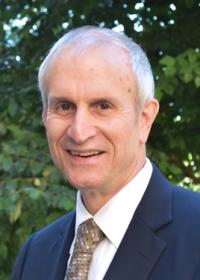Thomas Fleming was bound for the priesthood – until he met an incredible math teacher who turned him on to science.
“Part way through my time at St. Thomas College in St. Paul, I decided there’s just too much I wanted to do in the scientific world,” said Fleming, a long-time professor of biostatistics who credits his inspiration to a professor he “followed like a puppy.”
The priesthood’s loss was science’s gain. Fleming went on to become a leading biostatistician, co-developing the world’s most widely used statistical method to monitor clinical trials. He’s also a prominent advocate for the safety of new drugs and devices, and was a key researcher for a landmark trial on the prevention of HIV transmission.
Fleming didn’t enter academia immediately – a move that surprised his graduate school professors at the University of Maryland. After all, he had scored the highest marks ever on the PhD qualifying exams. Instead, Fleming joined the Mayo Clinic in his home state of Minnesota. For seven years, he took part in cancer research and liver transplantation work, learning “the art” of his profession.
“In our field of biostatistics, it’s not just the theory or methods we learn in graduate school, it’s the art of being able to effectively apply those theories to real-world problems,” Fleming says. “I call it developing common sense that’s not that common.”
While at the Mayo Clinic, Fleming was involved with the design, conduct and analysis of clinical trials, including the use of biomarkers to help understand whether treatments were effective.
With colleague Peter O’Brien in 1979, he developed what is now called the O-Brien-Fleming approach – a method for analyzing data repeatedly over time to determine when they’re adequately persuasive . The O’Brian-Fleming method helps determine whether the results really mean something or whether they can be explained by chance. It’s the most widely used method for interim analyses in clinical trials.
Much has been done since then to develop the method, Fleming says, including work by Professor Scott Emerson, “the world’s expert on these issues of monitoring trials and use of these methods.”
Though he was happy, near his wife’s family, and had just built a house in Minnesota, Fleming gave it all up when he was recruited by Ross Prentice in 1984 for a position at the University of Washington. “I already knew it was the mecca for survival analysis (understanding time to an event such as death),” Fleming said. “What I didn’t know was that people really cared about each other as well as about the science. It was a very collaborative atmosphere.”
Over the years, Fleming has worked on finding ways to more effectively tailor therapies to patients, and on evaluating the risks and benefits of interventions for the prevention and treatment of diseases. He has chaired or served on Data Monitoring Committees for more than 100 clinical trials, served as a member of several Food and Drug Administration Advisory Committees, and is a special government employee for the FDA.
He is most proud of an article he penned in 2010 for the Annals of Internal Medicine called Clinical Trials: Discerning Hype From Substance. It discusses the challenge of bias that scientists face when exploring data about the safety and effectiveness of a treatment. “If you’re looking across an array of results and your goal is to find something good, you will, even if it’s a placebo,” Fleming says.
That’s why the scientific objectivity of the biostatistician is critical to getting unbiased assessments. “Biostatisticians are often well-suited to serve as the conscience of the research team,” Fleming says, recalling the words of a Mayo Clinic colleague.
In 2011, Fleming was senior author of a New England Journal of Medicine article about a trial – HPTN 052 – that showed antiretroviral medication reduced the risk of heterosexual transmission of HIV by 96 percent. Science magazine dubbed it the “Breakthrough of the Year.”
“This study shows that it almost completely eliminates transmission,” Fleming said. “A stunning result. It has led to the concept of treatment for prevention.”
Fleming is former director of the Statistical Center for HIV/AIDS Prevention Trial Network at the Fred Hutch research center. He speaks passionately about the need for social, political and financial will to fight the spread of HIV.
“Now we’re looking at alternatives like oral drugs and long-acting injectables that you take once every three months,” he says. “That’s exciting. We’re about to launch a trial in that. It has the potential of being the next success.”
Teaching the next generation is another important focus, and a factor that drew Fleming to the UW more than 30 years ago.
“My happiest days are when the right thing happens and I didn’t have to be there to do it,” says Fleming, who counts Biostat 524, a clinical trials class, among his favorites. “My career is going to have a limitation in time. My passion is that we will have changed the science in ways that the right thing will happen over the long haul, long after we’re gone.”
